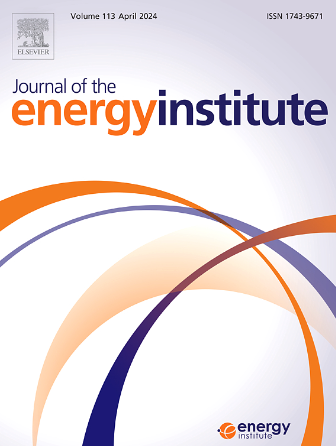Effects of pretreatment procedure, compositional feature and reaction condition on the devolatilization characteristics of biomass during pyrolysis process: A review
IF 5.6
2区 工程技术
Q2 ENERGY & FUELS
引用次数: 0
Abstract
Biomass is a plentiful and renewable energy source. Currently, the conversion of biomass into gaseous product, bio-oil, and biochar through pyrolysis is one of the significant technologies in the development of the energy recycling economy. The application research of three-phase products of biomass has gradually reached the commercial level. This paper reviewed the latest advancements in biomass pyrolysis technology, especially the impacts of pretreatment processes, types of biomass materials, and pyrolysis parameters on the products derived from biomass pyrolysis. Through detailed analyses of physical, chemical, physicochemical, and biological pretreatment technologies, the potential of different pretreatment methods for enhancing the quality of three-phase products was revealed. Moreover, the effects of different biomass materials on the pyrolysis products was also discussed systematically, elucidating how pyrolysis temperature, heating rate, reaction duration, gas atmosphere and pressure affecting the distribution and properties of pyrolysis products. Finally, this paper presented the challenges and future directions in the field of biomass thermal conversion, providing a theoretical foundation and technical support for the efficient conversion and utilization of biomass based solid waste.
求助全文
约1分钟内获得全文
求助全文
来源期刊

Journal of The Energy Institute
工程技术-能源与燃料
CiteScore
10.60
自引率
5.30%
发文量
166
审稿时长
16 days
期刊介绍:
The Journal of the Energy Institute provides peer reviewed coverage of original high quality research on energy, engineering and technology.The coverage is broad and the main areas of interest include:
Combustion engineering and associated technologies; process heating; power generation; engines and propulsion; emissions and environmental pollution control; clean coal technologies; carbon abatement technologies
Emissions and environmental pollution control; safety and hazards;
Clean coal technologies; carbon abatement technologies, including carbon capture and storage, CCS;
Petroleum engineering and fuel quality, including storage and transport
Alternative energy sources; biomass utilisation and biomass conversion technologies; energy from waste, incineration and recycling
Energy conversion, energy recovery and energy efficiency; space heating, fuel cells, heat pumps and cooling systems
Energy storage
The journal''s coverage reflects changes in energy technology that result from the transition to more efficient energy production and end use together with reduced carbon emission.
 求助内容:
求助内容: 应助结果提醒方式:
应助结果提醒方式:


